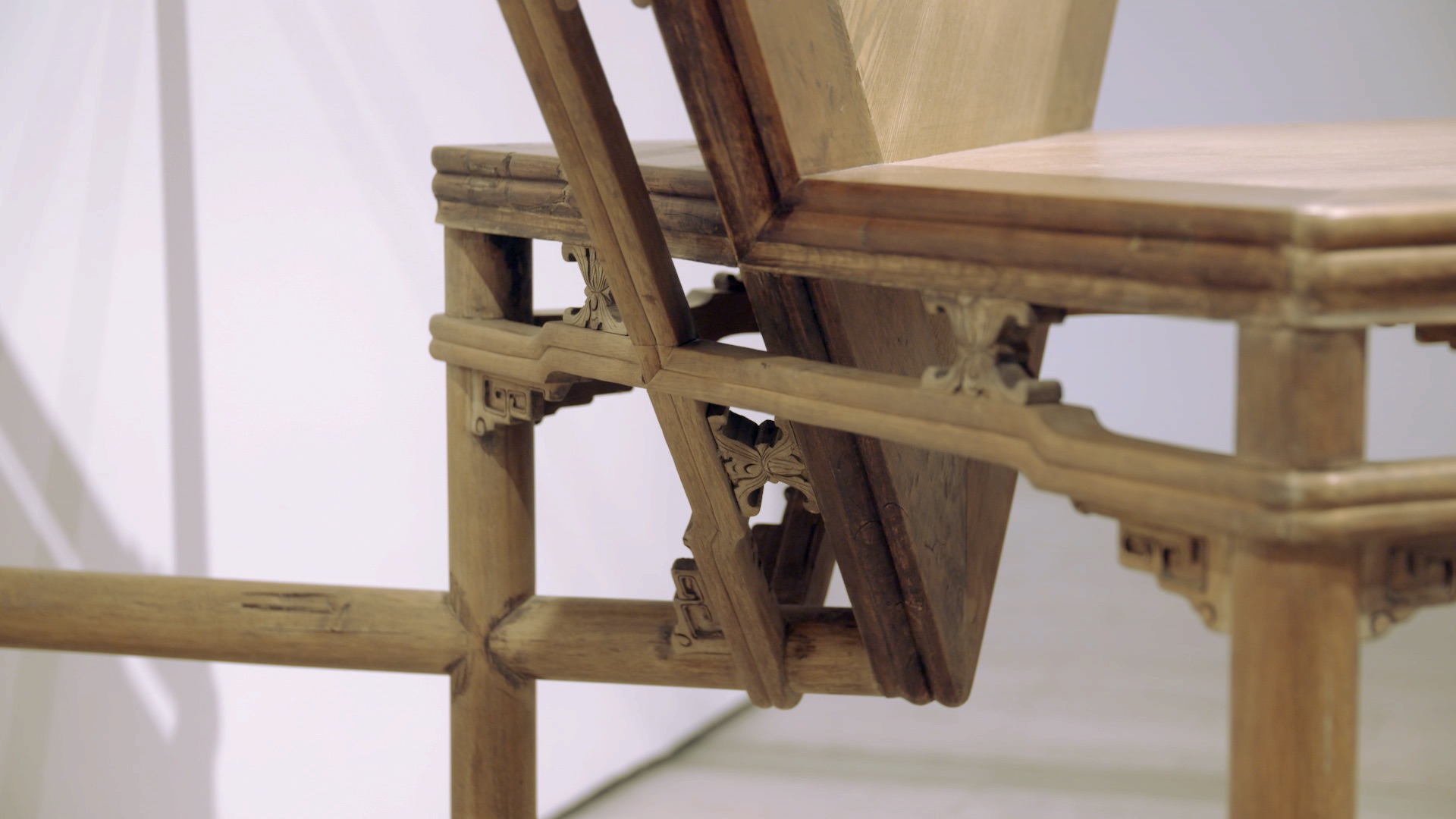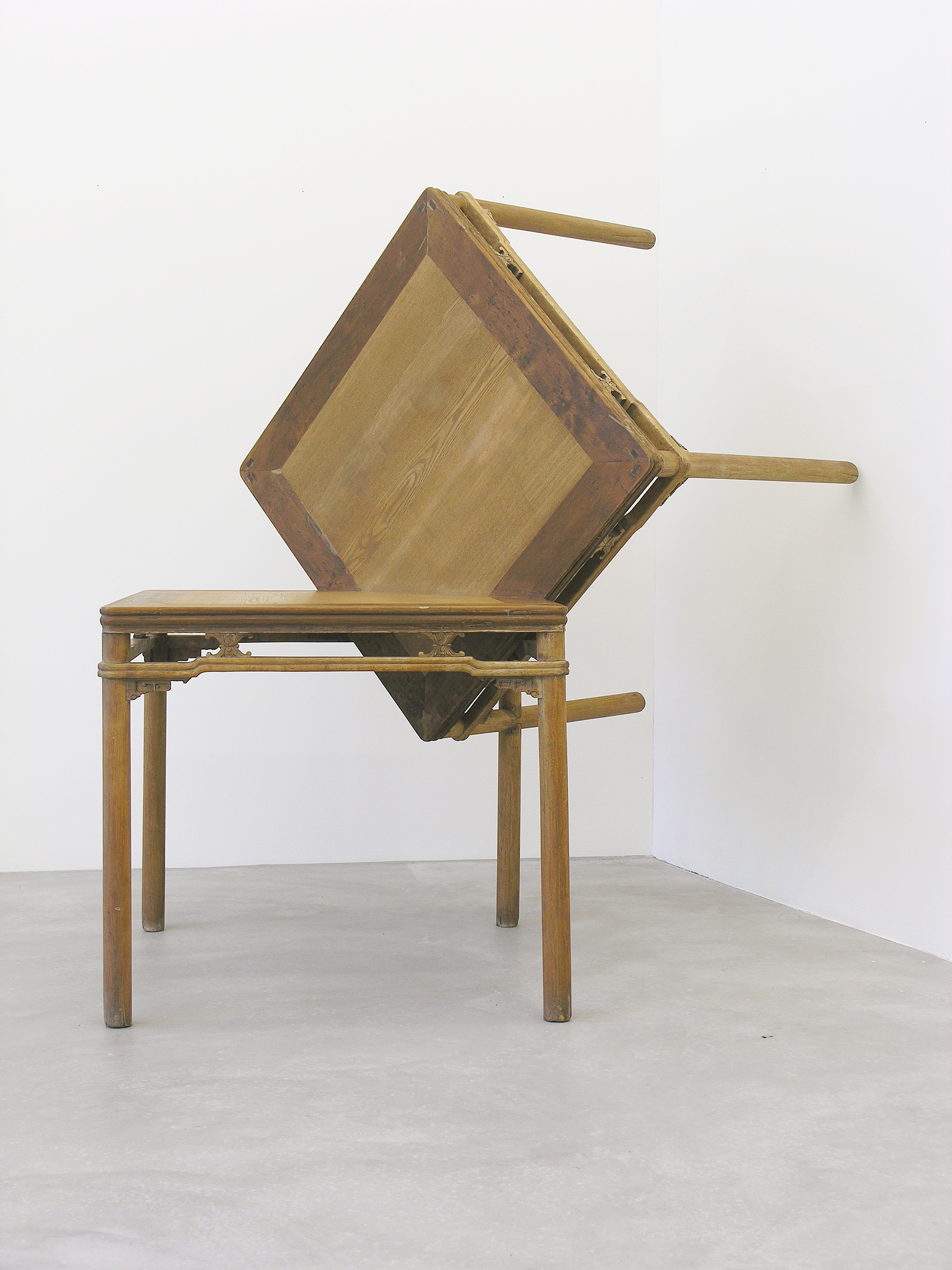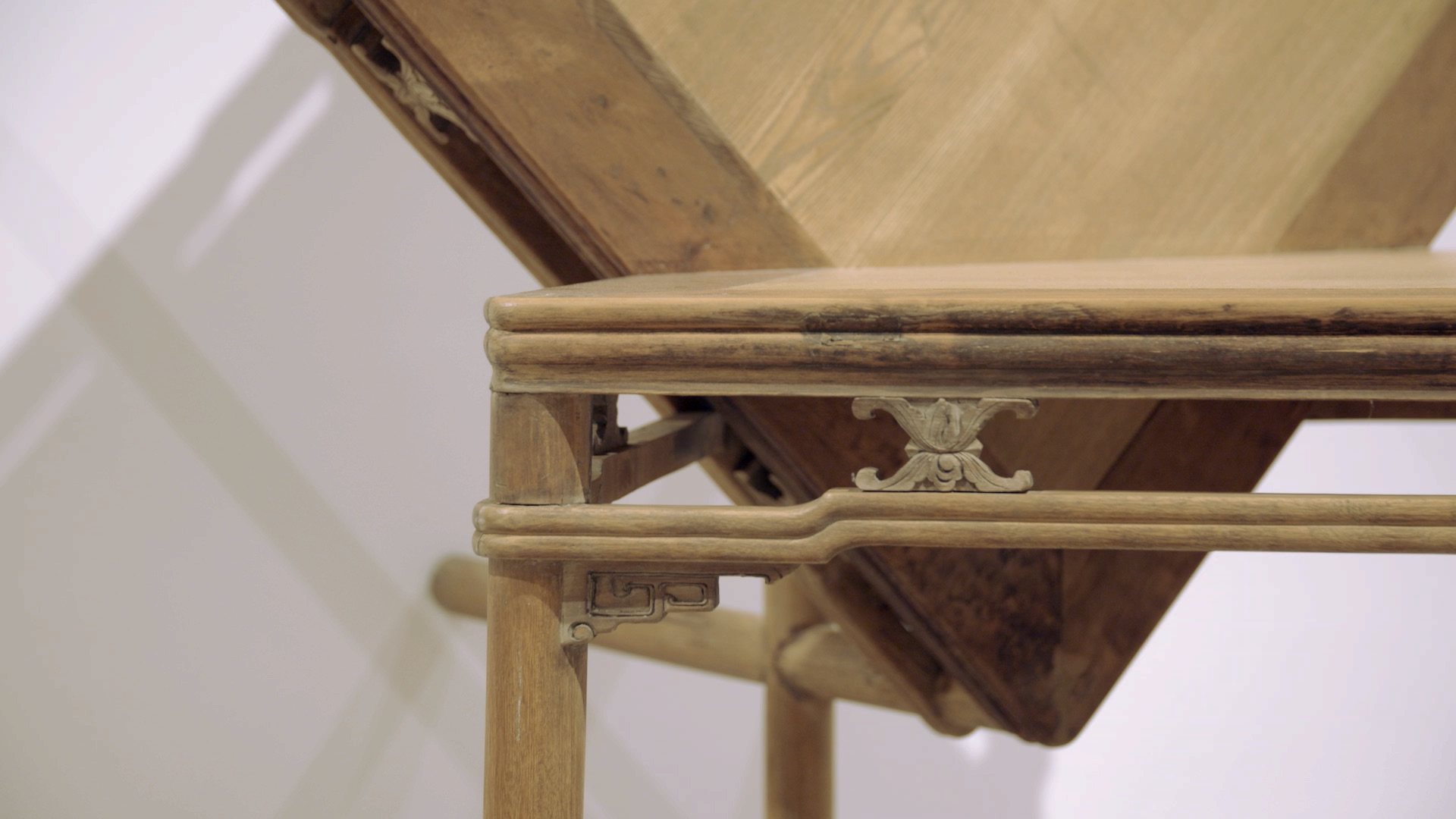
Artist Profile
Since the 1990s, Ai Weiwei has utilized several materials that are imbued with tradition, including pottery, porcelain, stone, bronze, and wood. Through his reconfigurations of these materials he often interrogates how cultural value is assigned and accrued.
Beginning with his Furniture series in 1997, Ai collaborated with expert craftsmen using woodworking techniques developed in the sixteenth century to reconfigure antique furniture into nonfunctional objects.
In the work Tables at Right Angles, Ai used hidden mortise-and-tenon joints to seamlessly suture together two ancient tables collected from a Beijing antique market. The work was constructed without a single screw or nail. Part of his Furniture series, this work is an example of how Ai alters, transforms, and often destroys cultural relics and historic antiques, subtly questioning the value and authenticity of the tables in their original form and their new worth after being transformed into an art object.
“No longer to be used, the work foregrounds the technical virtuosity of its craftsmanship while bringing the craft tradition into the sphere of contemporary art.”—Simone Levine 1
Footnotes
- 1
Simone Levine, “Interrogations of Tradition,” in The Allure of Matter: Material Art from China, eds. Orianna Cacchione and Wu Hung (Chicago: University of Chicago Press, 2019), 80.
Works on View
Tables at Right Angles, 1998
Tables from the Qing dynasty (1644–1911)
68 7/8 x 49 5/8 x 68 1/2 in. (175 x 126 x 174 cm)
Stockamp Tsai Collection

